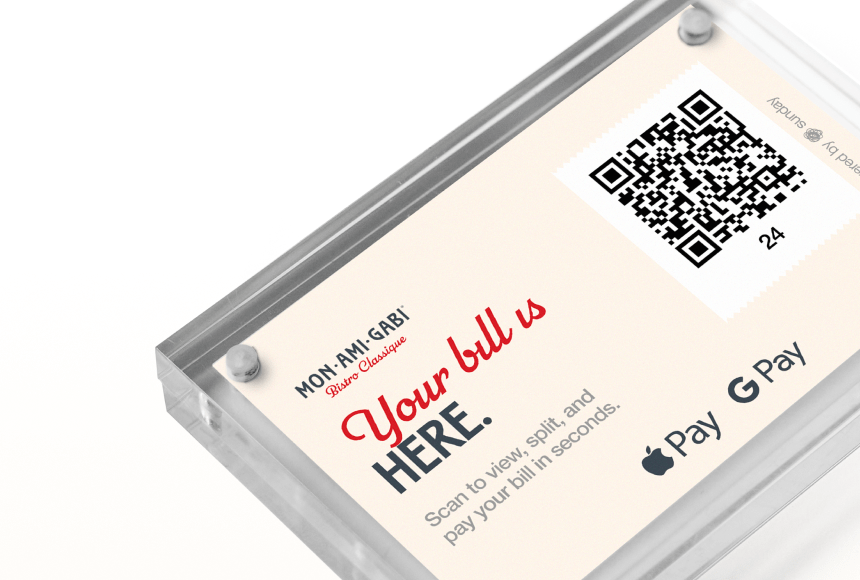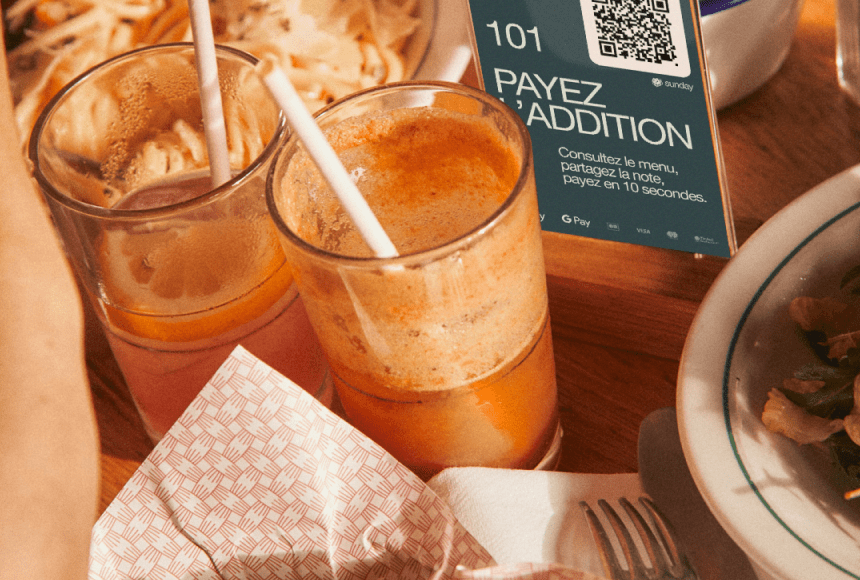
Seven Essential Data Points to Elevate Your Restaurant’s Service
1) Table Turnover Rate: Maximizing Each Seat
No matter how delicious your food or warm your ambiance, if tables remain occupied for too long, you risk limiting the number of guests you can serve in a given meal period. Your best dish can’t shine if restaurant-wide service slows to a crawl. That’s why tracking table turnover rate is crucial. This figure measures how many parties you serve at a single table over a particular timeframe—typically an hour or a service shift.
A healthy turnover rate keeps the energy high and your hosts busy seating new arrivals. It’s not just about hustling people out the door; rather, it’s about organizing service so every guest feels tended to without lengthy wait times. If you notice that your turnover rate is lagging in certain time slots, dig deeper:
- Are servers delayed in hitting the table upon arrival?
- Is the kitchen workflow causing longer ticket times?
- Does the payment process take too long, especially if guests are waiting for the check?
One easy solution is to adopt a mobile payment process that allows customers to pay promptly at the table—like scanning a QR code on their phone. Tools such as sunday expedite payments, freeing up your servers to focus on what they do best: connecting with guests, rather than juggling credit card swipes.
2) Average Check Size: Understanding Customer Spending
It’s no secret that average check size, also referred to as the average ticket size, can signal a restaurant’s overall health. This metric tells you the amount each table or guest spends on average. Increasing it can be a game-changer, since it means higher revenue without requiring more covers.
If your average check size hasn’t been growing, consider:
- Staff training: Servers should know your menu, wine pairings, and features inside out to make confident recommendations.
- Strategic add-ons: Upsell items—like signature sides, unique desserts, or promotional cocktails—that appeal to diner preferences.
- Menu optimization: Consider pairing combos or multi-course deals that deliver value while nudging customers toward slightly higher spends.
Tools that integrate payment and ordering systems can also surface real-time data on average check trends, prompting more precise decision-making. By analyzing how average check sizes fluctuate across weekdays, weekends, or different dayparts, you can tailor seasonal or event specials on the fly.
3) Customer Satisfaction Score: Measuring the Guest Experience
A restaurant without satisfied customers is like a pot without salt—bland and missing its essence. To truly understand your guests’ happiness, it’s critical to track a customer satisfaction score (CSAT) or a net promoter score (NPS). These scores can be gathered via short surveys, social media polls, or review platforms. They offer quantitative insights into customer sentiment, pointing you to operational strengths and weaknesses.
Here’s a simple approach: after a meal, encourage your guests to rate their visit promptly. Using a QR code that leads to a quick feedback form—potentially on a tablet or on their phone—makes it more likely you’ll receive immediate reactions. As a GM:
- Respond to reviews promptly—both positive and negative.
- Be transparent about improvements. If you’ve changed a recipe or upgraded the decor, let customers know.
- Invite them back to demonstrate your restaurant’s responsiveness to feedback.
You might reference a widely cited stat from the National Restaurant Association: a significant number of diners trust peer reviews as much as personal recommendations. That means your CSAT or NPS can be a direct line to stronger word-of-mouth and local buzz.
4) Tip Percentage: Insight into Service Quality and Team Morale
Tips aren’t simply an employee perk—they’re also a window into guest satisfaction and server performance. Although tipping norms can vary from region to region, analyzing your average tip percentage helps you gauge whether your team consistently delivers outstanding service.
When tip percentages dip, ask yourself:
- Is staff training consistent? Do servers know how to communicate menu knowledge clearly and authentically?
- Are you short-staffed, making servers scramble and thus appear less attentive?
- Is the speed of service or payment friction diminishing the overall experience?
Empowering guests with a streamlined way to tip—such as including a tip screen directly on a device at the table or presenting suggested gratuity amounts—can also lift tip percentages. This approach ensures guests never feel awkward about how much to leave, and servers receive fair compensation for their efforts.
5) Employee Satisfaction and Retention: The Heart of Your Operation
Let’s be real: a cramped kitchen or a front-of-house staff bearing the weight of consecutive double shifts isn’t sustainable. Your team is the heart and soul of the dining experience. It’s vital to keep track of employee satisfaction and retention metrics—particularly when industry data suggests high turnover can cost an operator thousands in lost productivity and hiring expenses.
A few ways to keep your finger on employee morale:
- Regular check-ins or “pulse” surveys to gauge stress levels, especially after busy holiday seasons or major events.
- Opportunities for growth and cross-training—letting staff explore both front and back-of-house roles fosters loyalty.
- Transparent communication about scheduling, wages, and tipping policies.
A stable team is a consistent team, and consistency is exactly what your guests crave. By showing employees you value their input and offering them a platform to share feedback, you’ll reduce turnover rates, boost service quality, and deepen your restaurant’s sense of family.
6) Wait Times and Ticket Times: Balancing Speed with Quality
It’s easy to get wrapped up in overarching KPIs and forget the metrics that directly affect the diner’s in-seat experience. One such metric is wait time—how long guests wait to be seated, how long before they see a server, and how long it takes for their order to arrive. Equally important is ticket time, which tells you how efficiently the kitchen completes orders.
Nobody loves waiting. Long waits can lead to costly no-shows or impatient walkouts. While a short wait can build anticipation for the meal, extended delays might leave diners frustrated, feeling overlooked, or simply bored. If you’re noticing extended wait times, consider:
- Investing in technology that streamlines the reservation and seating process.
- Ensuring your kitchen is well-staffed during peak times and that prep stations are organized.
- Offering quick bites or amuse-bouches to keep waiting guests engaged and happy.
Regarding ticket times, keep a close eye on kitchen flow. An optimized kitchen layout, with well-defined stations, helps ensure chefs aren’t bumping elbows. If you notice recurring bottlenecks, rearranging prep areas or clearing unnecessary steps can drastically reduce ticket times.
7) Google Reviews and Online Reputation: The Modern Report Card
Once upon a time, word-of-mouth was mainly spread organically. Now, potential patrons scroll through Google reviews before choosing to walk through your doors. A strong online presence reflects well on your overall brand, influences new diner decisions, and even impacts local SEO (Search Engine Optimization) performance in your area.
Monitoring and encouraging Google reviews is a great way to gain unfiltered insight into what your customers think. You can prompt them to leave a review immediately after they pay using a seamless QR code that points them straight to your Google business listing. Tools like sunday can help by gently reminding each guest to share their experience online—keeping the process fast and easy.
If you spot a negative review, respond quickly and politely. Words like “We’re sorry for your experience. We’ve addressed the concern” can go a long way in showing prospective diners you’re dedicated to top-notch hospitality. When done right, your online reputation management becomes an extension of your in-restaurant service.
Seeing the Bigger Picture with a Data-Driven Mindset
Now that we’ve highlighted the seven core metrics—table turnover rate, average check size, customer satisfaction, tip percentage, employee satisfaction, wait times, and Google reviews—you likely see how they interconnect. An uptick in table turnover, for instance, might boost overall daily covers, but if it impacts service quality and lowers tips, your servers won’t be thrilled. Improving one metric mustn’t come at the expense of another.
A GM’s role is a balancing act. Successful managers unify data from different points, picking out patterns that can guide strategy:
- Integrate reports: Use a centralized system that captures real-time data on sales, tip distribution, and guest feedback. This saves time and lowers error risk.
- Establish benchmarks: Compare your current numbers to historical performance or industry averages from sources like the U.S. Bureau of Labor Statistics (for workforce standards) or local restaurant associations. Realistic goals keep everyone motivated.
- Communicate results: Sharing progress with your team fosters collective pride and accountability. If you improved tip percentages by 2%, let the staff know. Congratulate them for their hard work!
When your team feels ownership of these metrics, you transform raw data into a motivational tool. Everyone from the kitchen to the bar staff can see how they contribute to the restaurant’s overall success.
Bringing Flavor, Heart, and Efficiency to the Forefront
There’s a special thrill in being a restaurant GM. It’s the chance to orchestrate a symphony of tastes, sights, and friendly interactions, all wrapped into a single memorable experience. Yet that orchestration is only as good as the insights behind it. Metrics give you visibility, revealing the layers of daily operations. They expose what’s working, what’s not, and where there’s an opportunity to refine your recipe for success.
Investing in the right mix of technology—like integrated point-of-sale systems or QR-code-based payment tools—can make it significantly simpler to keep tabs on these numbers. Meanwhile, consistent leadership, staff training, and an approach that values the human element behind every order slip or guest interaction will drive growth. In short, the difference between a restaurant that survives and one that thrives lies in deliberate, data-informed choices.
Treat Your Guests to an Outstanding Service Journey
Think of tracking these metrics as testing and perfecting a best-selling house dish. You start with fundamental ingredients, but you measure each spice, each garnish, each swirl of sauce until it meets your exact standards. Yet you don’t stop there—you continue to tweak the ratio of salt to sugar, adjusting cooking times, and reimagining plating until every version of that dish improves on the last.
The same applies to running a service-driven restaurant. By faithfully monitoring—and acting on—table turnover rate, average check size, guest satisfaction, tipping trends, team morale, wait times, and online reputation, you’re well on your way to creating a smooth dining experience that leaves a delightful aftertaste. And when your systems are robust and your staff is supported, you’re free to focus on what truly matters: making each diner’s visit something they’ll remember and rave about.
In a highly competitive market, that differentiation can be the key to attracting new patrons and keeping loyal ones. So, put these metrics to work for you, keep your staff engaged, and never stop fine-tuning. You’ll be surprised at how swiftly a more confident, profitable, and fulfilling service comes to life.
Find out more today
Drop us your details below and we’ll reach out within the next 24h
Get to know your team.
Gather insightful data about your staff in real-time.




